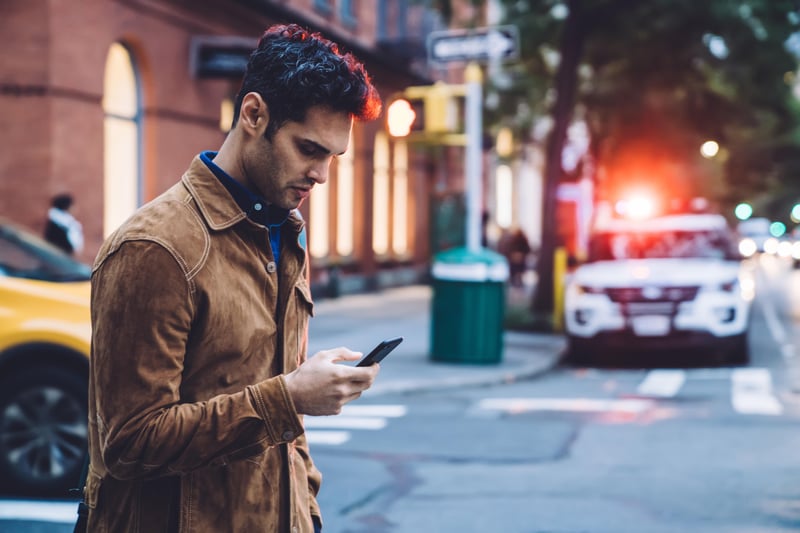Get Healthy!

- Sarah D. Collins
- Posted August 9, 2023
Study Confirms it: Texting While Walking Is Dangerous
It seems obvious that texting and walking can be a dangerous duo, but now a new Australian study offers solid evidence of the dangers.
Emergency room doctors Dr. Michael Levine and Dr. Matthew Harris, who were not involved in the study, weren't surprised by the findings.
"I think we've had, this summer, several people who either have been distracted while walking and have been hit by a car or been hit by a bicycle," said Harris, from Northwell Health in New Hyde Park, N.Y.
"I've definitely seen people stepping off curbs when they were not supposed to, not seeing cars come"¦ because they were too busy looking at their phone when they should have realized where the sidewalk ended," added Levine, from UCLA Health. "So, I've seen all different permutations of people getting injured from texting and walking across the street."
For the study, Australian researchers recruited 50 students from the University of New South Wales and had them go through four exercises. One was to text while sitting, another was to walk without texting, another was to have them walk and text, "The quick brown fox jumps over the lazy dog,"and the last one was to have students walk and text the same message while going through a walkway specifically designed by one of the scientists to have tiles slip out of place.
Using wearables for measurement, the scientists found that cellphone use significantly impaired the students' balance and gait stability. They also found that more hazards in the texters' way led to reduced texting accuracy.
The findings were published Aug. 8 in the journal Heliyon.
Here's a video describing the experiment:
"When not working, I like to go surfing,"said senior study author Matthew Brodie, a senior lecturer in biomedical engineering at the University of New South Wales. "Sydney beaches, such as the beautiful Bondi beach, are world famous, but on any day it seems as many as 80% of people, both younger and older, may be head-down and texting. I wondered, is this safe? Is this the future we want to live in? What is it about texting and smartphone use that is hyper-addictive?"
This prompted Brodie to conduct this research on texting and walking.
"I'm not sure that this study itself is as applicable to real-world environments as we would like or as I would like, but I definitely think that the authors probably got the conclusions correct,"said Levine.
The National Highway Traffic Safety Administration states that around 8% to 9% of all fatal motor vehicle collisions in the United States are due to distracted driving, which includes vehicle and pedestrian collisions.
But it's not just from texting -- one U.S. study found an association between headphone use by pedestrians and injuries or fatalities from train or car collisions. Of the 116 deaths reported between 2004 and 2011, 68% were male and 67% were under the age of 30.
"Developmental neuroscience makes younger adults most at risk,"said Brodie. "Texting, social media and other apps are addictive and provide an immediate socio-emotional reward.
"During adolescent brain development, the mismatch between the earlier development of the socio-emotional network [sensitive to the stimuli and rewards of texting] and the later development of the cognitive control network [that regulates risky behavior] means that these people will value the rewards over the risks" he noted.
Brodie said curbing texting and walking deaths may only require some creative technology.
"I would call for the manufactures of the smartphones to take responsibility for the technology they are producing," he said.
"Long before the current explosion of many health tracking apps, my previous research showed the sensors in mobile phones could be used to detect walking," Brodie said. "Therefore, a safety screen lock to prevent texting, social media use or other visual distractions while walking would be straightforward to implement."
More information:
For more on pedestrian safety, visit the U.S. National Highway Traffic Safety Administration.
SOURCES: Michael Levine, MD, emergency medicine, medical toxicology, UCLA Health, Los Angeles; Matthew Isaac Harris, MD, pediatric emergency medicine, Emergency Medical Services, Pediatrics at Northwell Health, New Hyde Park, N.Y.; Matthew Brodie, PhD, senior lecturer, neuroscientist and engineer, UNSW Sydney; Heliyon, Aug. 8, 2023






